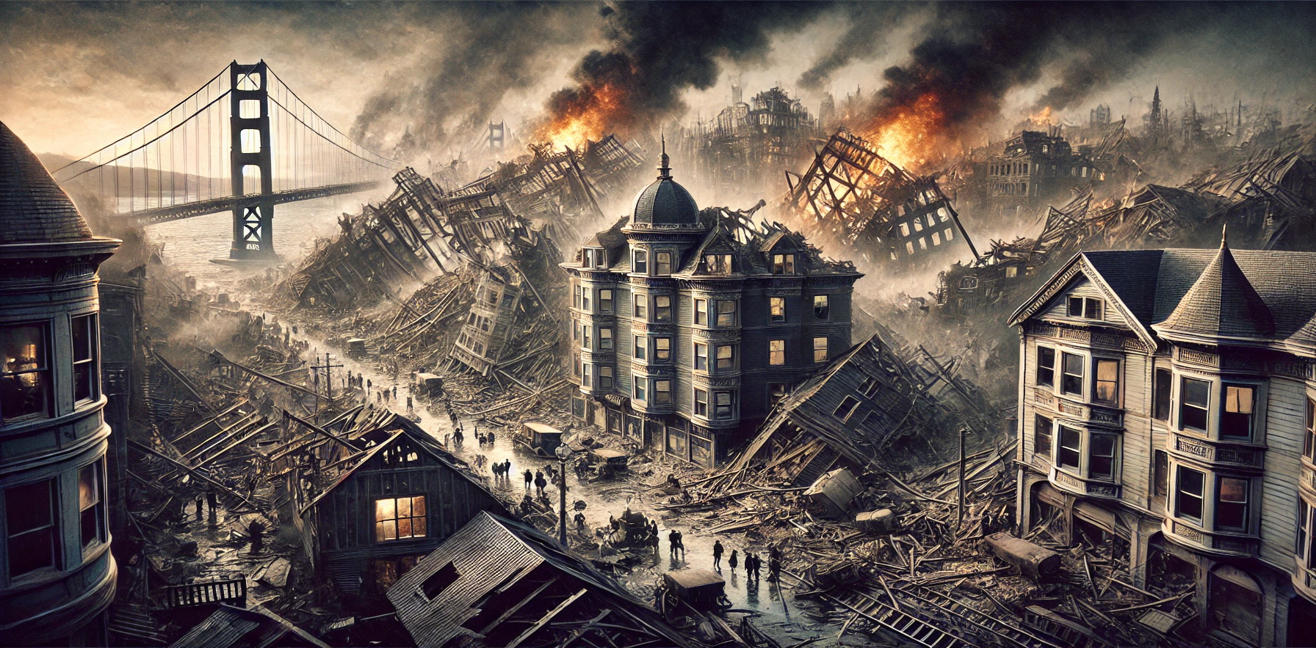April 18, 1906, remains an unforgettable day in San Francisco’s history. This date not only symbolizes a massive catastrophe but also marked the beginning of modern earthquake science. A magnitude 7.8 earthquake destroyed the city’s infrastructure, buildings, and lives. Its devastating impact was not just from the earthquake itself, but also from the subsequent fires that turned much of the city into rubble.
Causes and Effects of the Earthquake
In 1906, San Francisco was one of the most modern cities in the world. However, at 5:12 AM on April 18, a massive earthquake along the San Andreas Fault shattered the city’s confidence and infrastructure. The quake lasted approximately 45 seconds, but that was enough to transform San Francisco and the surrounding areas into a disaster zone.
The epicenter of the earthquake was located about 80 kilometers southeast of San Francisco, in northern California. The buildings in the city suffered significant damage, roads were destroyed, and water pipelines burst. The destruction wasn’t limited to the physical structures alone; massive fires ignited after the earthquake exacerbated the disaster.
Fires: The Second Catastrophe After the Earthquake
The fires that broke out immediately after the earthquake made the situation even worse. With water pipes burst, firefighters could not extinguish the flames. The chaos caused confusion over which areas were affected and which buildings had been more severely damaged. The fires continued for three days, and many historic structures were reduced to ash. At the time, San Francisco had around 400,000 residents, and a significant portion of them became homeless.
Casualties and Damages
The 1906 San Francisco earthquake claimed the lives of more than 3,000 people. This loss of life was felt not only within the city but also in nearby towns and rural areas. Along with the loss of life, the economic collapse of the city, the shutdown of businesses, the disruption of trade, and the destruction of infrastructure caused a major social crisis.
Economic and Social Impact
San Francisco was an economic and cultural center in the United States in 1906. However, the earthquake and the fires that followed turned the city into a pile of rubble that needed to be rebuilt. Hundreds of thousands of people were left homeless and unemployed, and a massive effort was made to rebuild the city. This period highlighted the community’s solidarity and determination to recover, but life was especially hard in working-class neighborhoods during this time.
Scientific and Technological Developments
The 1906 San Francisco earthquake significantly impacted global earthquake research. Scientific studies conducted afterward helped us understand the movements of the San Andreas Fault and how earthquakes occur. This disaster was the precursor to the development of modern earthquake engineering and construction safety. More research into earthquakes began, and new safety measures were implemented in building design.
The Lasting Legacy: San Francisco’s Rebirth
San Francisco began rebuilding rapidly after the disaster. The old buildings were replaced with stronger, more resilient structures. This process contributed to the city’s rebirth as a modern metropolis. However, the 1906 earthquake still remains deeply embedded in the memories and culture of the city.
The 1906 San Francisco earthquake was not just a disaster; it also symbolizes humanity’s resilience, the determination to rebuild, and the importance of community solidarity. Today, the modern buildings and advanced infrastructure in San Francisco stand as a testament to the passage of time and the strength of humanity.
Conclusion
The 1906 San Francisco earthquake left a lasting mark on the world and laid the foundation for modern earthquake science. The lessons learned from this massive disaster continue to shape our approach to urban development and disaster preparedness. San Francisco’s rebirth serves as a reminder of the human spirit’s ability to rebuild and recover in the face of devastation.




